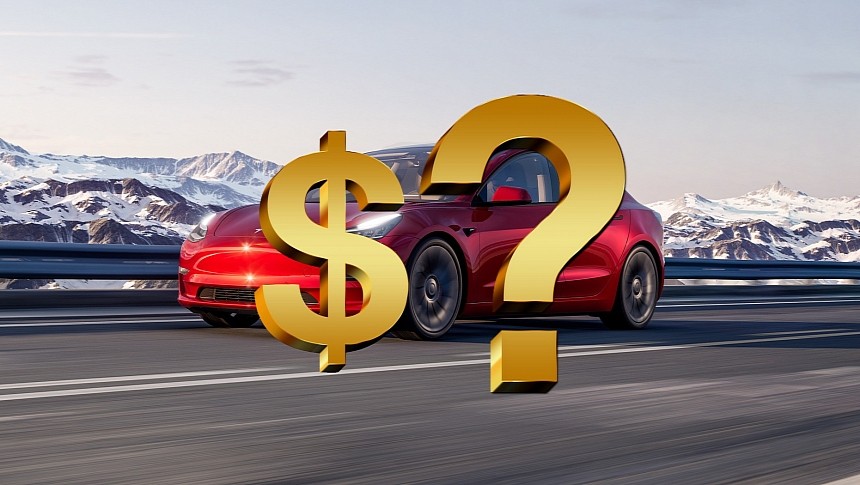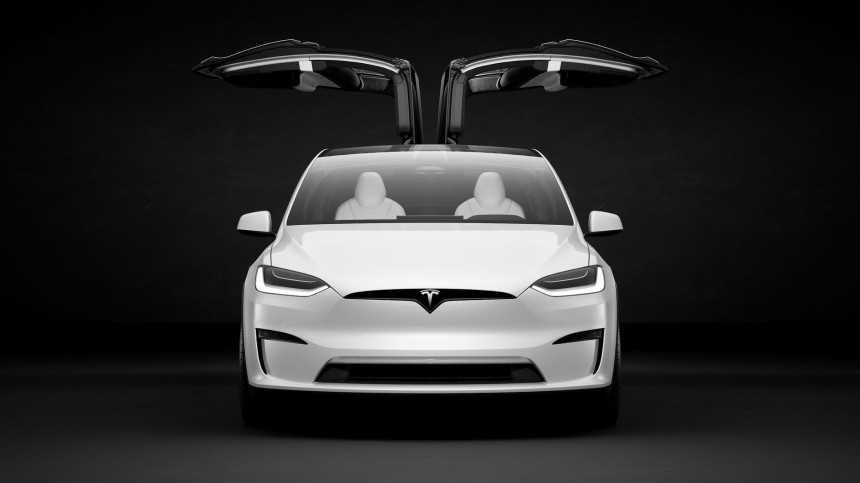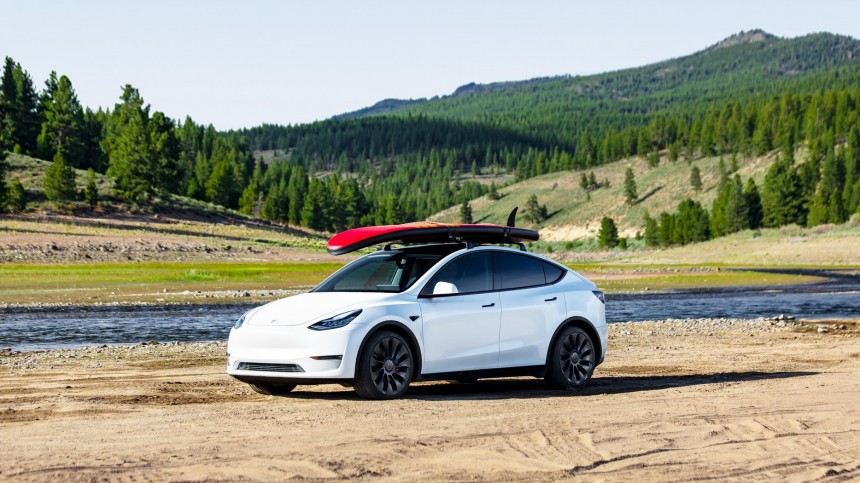In November 2022, I wrote about how difficult it was to believe Tesla had an average profit of $9,570 for every BEV it sold. These numbers emerged from the Q3 2022 earnings report. We have seen three more quarter reports go, and the doubt persists, now increased by the price cuts and something I had not included in my first text about this: battery packs that cost $15,000 to $20,000.
First of all, it is crucial to remember how Nikkei Asia calculated the $9,570 in profits with Tesla's Q3 2022 numbers. At the time, the BEV maker disclosed it had sold 344,000 units and claimed to have achieved an unaudited GAAP net income of $3.29 billion. To be precise, the numbers are slightly different than what Nikkei Asia reported: 343,830 BEVs were delivered for a $3.292 billion profit, which corresponds to a net income per car of $9,574.50.
Now let's check the Q4 2022 numbers. Tesla disclosed a $3.687 billion profit for 405,278 BEVs delivered. The average value per unit was $9,097.46. The BEV maker was already cutting prices to increase sales numbers. In Q1 2023, the net income dropped to $2.513 billion for 422,875 BEVs. That made the average profit per car tumble to $5,942.65, also due to price cuts. That's 37.9% less than the alleged profit in Q3 2022.
The price drops the American BEV maker performed were higher than that. Thanks to Tesla price trackers, it was possible to compare them from when the company was continuously increasing these prices until the latest price cut they had. Applaud the guys tracking these changes because they have managed to put some order in what would otherwise be a massive mess.
On January 12, 2023, Tesla lowered all prices after having increased them for a while. The average reduction was $11,800 compared to the last time Tesla raised prices ($2,000 for the Model Y Standard Range AWD on August 21, 2022). That only helps us have a glimpse of how much they fell, not about the effect these price changes had on profit margins. To calculate that properly, we would need to know many other details, such as sales volumes for each derivative in each country where Tesla sells its cars. If we consider the Tesla vehicles that really matter in sales volumes, the Model 3 had an average drop of $6,667, and the Model Y got $12,333 cheaper on average until that point – but that was not the end.
Join these two, and the cut is $9,500 on average – more than all the profit Tesla allegedly had in each BEV it sold in Q4 2022. Theoretically, the BEV maker would have made no money with sales in Q1 2023 with these prices. It increased some Model Y prices in February, but not enough for profit margins to recover to the $5,942.65 Tesla's accountability suggests it made per car in that period.
On April 6, all BEVs got a new price cut. Compared to how much the cars cost before the January drop, the new ones were $18,221 cheaper on average. If you take into consideration the prices after the January cut, they got $7,713 more affordable, also on average. The value drops were more substantial with the Model S and Model X. However, the Model 3 and Model Y got a price reduction on April 18 that changed these general averages to $19,444 compared to the prices before the January cut and $7,222 when confronted with the last price reduction in April.
Let's now consider only the Model 3 and Model Y to rule out the distortions the Model X and Model S can cause due to their low sales volumes. Comparing their price tags to what they presented before January 2023, the average drop was $8,500 for the electric sedan and $15,667 for the SUV. How can Tesla's best sellers still make the company a profit with such price reductions? The Q2 2023 quarterly update helped me… get even more confused about Tesla's accountability.
According to the BEV maker, it delivered 466,140 vehicles and still made $2,706 billion in profits. That's $5,805.12 per car, or only $137.53 less than the company earned per BEV in Q1 2023. Tesla justifies that with "ongoing cost-reduction efforts, the continued production ramp success in Berlin and Texas, and the strong performance of our Energy and Services & Other businesses." That's pretty hard to swallow: most of it does not make sense.
Selling more cars for lower prices will only increase or keep profits at the same level if the sales volume skyrockets, which was not the case. Tesla mentioned the North American Charging Standard (NACS) adoption for Service and other businesses as something positive, but it did not seem to have any financial impact now: most automakers will only have access to the Supercharging network in 2024. Unless they paid Tesla in advance for that – and there is no reason why they should – no money got involved at this point.
Tesla Energy was the only business branch to present better results. According to Tesla, it deployed 3.653 GWh in Q2 2023. If we were talking only about Megapacks, each can store up to 3.9 MWh, which means Tesla must have delivered less than one thousand of these energy storage devices. Still, revenue for Energy was $1.509 billion in Q2 2023. In Q3 2022, when Tesla numbers suggested it made $9,574.50 per car, Energy revenue was $1.117 billion. According to these numbers, most of the money the BEV maker made came from cars: the automotive division revenue jumped from $18.692 in Q2 2022 to $21.268 in Q2 2023, despite the price cuts.
We currently have the Model 3 starting at $40,240 and the Model Y at $47,740. Consider that Tesla prices a new replacement battery pack for these vehicles at around $15,000. That would make the Model 3 cost $25,240 if it were sold without that component. In the same scenario, the Model Y would have a $32,740 price tag. Again: Tesla had an average profit of $9,097.46 at the end of 2022. The Model 3 experienced a discount of $8,500 compared to its prices before the January reduction, and the Model Y has been $15,666,67 cheaper since then. According to Tesla, they still help the company pocket $5,805.12 on average. How is that possible?
To make matters worse, the American BEV maker is the only big car company claiming to profit from electric vehicles. Some Chinese companies also say they do, but most legacy carmakers just hope they will eventually pay off. Some even report massive losses, as Ford recently did with its EV branch. How can companies that have manufactured cars for decades not figure out how to make money from BEVs and Tesla present the highest profits the industry has ever seen with them? As we would hear in Hamlet, "Something is rotten in the state of Denmark." While its investors believe these numbers, Tesla will not feel compelled to explain them – which does not make it any less strange for everybody else.
Now let's check the Q4 2022 numbers. Tesla disclosed a $3.687 billion profit for 405,278 BEVs delivered. The average value per unit was $9,097.46. The BEV maker was already cutting prices to increase sales numbers. In Q1 2023, the net income dropped to $2.513 billion for 422,875 BEVs. That made the average profit per car tumble to $5,942.65, also due to price cuts. That's 37.9% less than the alleged profit in Q3 2022.
The price drops the American BEV maker performed were higher than that. Thanks to Tesla price trackers, it was possible to compare them from when the company was continuously increasing these prices until the latest price cut they had. Applaud the guys tracking these changes because they have managed to put some order in what would otherwise be a massive mess.
Join these two, and the cut is $9,500 on average – more than all the profit Tesla allegedly had in each BEV it sold in Q4 2022. Theoretically, the BEV maker would have made no money with sales in Q1 2023 with these prices. It increased some Model Y prices in February, but not enough for profit margins to recover to the $5,942.65 Tesla's accountability suggests it made per car in that period.
On April 6, all BEVs got a new price cut. Compared to how much the cars cost before the January drop, the new ones were $18,221 cheaper on average. If you take into consideration the prices after the January cut, they got $7,713 more affordable, also on average. The value drops were more substantial with the Model S and Model X. However, the Model 3 and Model Y got a price reduction on April 18 that changed these general averages to $19,444 compared to the prices before the January cut and $7,222 when confronted with the last price reduction in April.
According to the BEV maker, it delivered 466,140 vehicles and still made $2,706 billion in profits. That's $5,805.12 per car, or only $137.53 less than the company earned per BEV in Q1 2023. Tesla justifies that with "ongoing cost-reduction efforts, the continued production ramp success in Berlin and Texas, and the strong performance of our Energy and Services & Other businesses." That's pretty hard to swallow: most of it does not make sense.
Selling more cars for lower prices will only increase or keep profits at the same level if the sales volume skyrockets, which was not the case. Tesla mentioned the North American Charging Standard (NACS) adoption for Service and other businesses as something positive, but it did not seem to have any financial impact now: most automakers will only have access to the Supercharging network in 2024. Unless they paid Tesla in advance for that – and there is no reason why they should – no money got involved at this point.
We currently have the Model 3 starting at $40,240 and the Model Y at $47,740. Consider that Tesla prices a new replacement battery pack for these vehicles at around $15,000. That would make the Model 3 cost $25,240 if it were sold without that component. In the same scenario, the Model Y would have a $32,740 price tag. Again: Tesla had an average profit of $9,097.46 at the end of 2022. The Model 3 experienced a discount of $8,500 compared to its prices before the January reduction, and the Model Y has been $15,666,67 cheaper since then. According to Tesla, they still help the company pocket $5,805.12 on average. How is that possible?
To make matters worse, the American BEV maker is the only big car company claiming to profit from electric vehicles. Some Chinese companies also say they do, but most legacy carmakers just hope they will eventually pay off. Some even report massive losses, as Ford recently did with its EV branch. How can companies that have manufactured cars for decades not figure out how to make money from BEVs and Tesla present the highest profits the industry has ever seen with them? As we would hear in Hamlet, "Something is rotten in the state of Denmark." While its investors believe these numbers, Tesla will not feel compelled to explain them – which does not make it any less strange for everybody else.


























































































